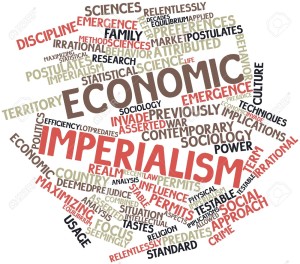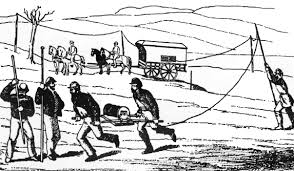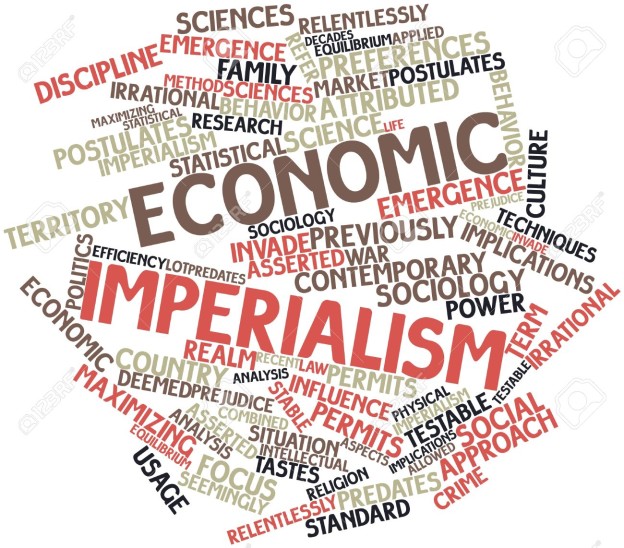Nowadays, the diffusion pace of technologies on a global scale is unprecedented. This is true for Information and Communications Technologies (ICTs) best represented by the Internet (and all its newer platforms) and mobile technologies. Most will also agree that technologies somehow play a decisive role in fostering economic development and economic growth. While that might be true in some contexts, was this always the case?
If we look back in history at the European expansion that started in the XIX Century, can we make the same argument? Did the European colonization of Africa and Asia of that time, which heavily relied on technological innovations and advantages, inevitably brought economic development to the colonies?
This is in part the question Headrick tries to answer in his 1988. Although dated 1, the book provides a detailed account of how the European powers of the time gained access and control of nations, people and resources by selectively deploying technologies while developing new ones.
 For sure, today few speak still about “imperialism.” It seems the concept has fallen out of favor. Instead, it has been replaced by globalization. Some would argue these two terms could be synonyms, especially if we characterize the latter as the expansion of multi-national corporations on a global scale, combined with substantial gains in their political power vis-à-vis nation-states and local communities. But this is a whole different story we will not address here.
For sure, today few speak still about “imperialism.” It seems the concept has fallen out of favor. Instead, it has been replaced by globalization. Some would argue these two terms could be synonyms, especially if we characterize the latter as the expansion of multi-national corporations on a global scale, combined with substantial gains in their political power vis-à-vis nation-states and local communities. But this is a whole different story we will not address here.
So what is imperialism? Unfortunately, no definition is provided in the text. At first glance, Headrick seems to equate imperial with expansionism, while avoiding any consideration of the reasons European countries embarked in such an enterprise. In his 1981 book, The Tools of Empire, Headrick discusses the concept in more details but stops short on endorsing any specific definition.
The book concentrates on Western Imperialism and its second wave which started around 1850. The end result of this new wave of Western Europe expansionism was the creation of so-called underdeveloped economies in Africa and Asia. How did this happen? What role did technology play in this process?
For Headrick, technology is not only a social process but also a social actor. It has a direct impact on human interaction and history. In terms of XIX Century Western imperialism, he identifies five ways in which such interactions take place:
- New, swift and affordable means of penetration
- Increasing demand for “tropical” products in Western Europe
- Technology “exports” to Africa and Asia
- The increasing demand for technology by Africans and Asians
- Substitution of synthetics for tropical products
This book focuses only on items 3 and 4.2
One of the key issues here is the diffusion of technology from Europe to the colonies. Technology transfer, Headrick argues, has two components: 1. Relocation of technology itself, including the experts who can handle it; and 2. Diffusion of knowledge, skills and “attitudes” of the technologies being exported. The first one he calls the economic or technical dimension of technology transfer. The latter is seen as the cultural and political pillar of technology transfer.
 The book is then divided into two sections. Eight book chapters discuss the economic and technical aspects and include technologies such as ships, telecommunications, railways, sanitation, and mining to name a few. The cultural elements are addressed in two chapters under the headings of technical education and experts.
The book is then divided into two sections. Eight book chapters discuss the economic and technical aspects and include technologies such as ships, telecommunications, railways, sanitation, and mining to name a few. The cultural elements are addressed in two chapters under the headings of technical education and experts.
The core argument here is that the economic elements of technology transfer move much faster than its cultural dimensions due to the unequal balance of power between the colonizers and the colonized. This, in turn, led to the creation of developing countries which are a complex mix of the traditional with the modern.
Headrick the concludes: “The difference between growth and development is a matter of innovation, entrepreneurship, and diversification; that is, human capital. The reasons the tropics experienced growth but little development under colonial rule is that investments went into physical, not human capital, and the transfer of technology was more geographic than cultural” (pgs. 383-384).
Headrick is making the case that the Europeans have little to no interest in promoting capacity development in the colonies. He even gives an example of Indian trains were being driven by Europeans almost 90 years after their introduction in the subcontinent. This was only possible only when the colonies became independent states. But even then, they depended heavily on Western technologies and expertise. No easy way of this vicious cycle seems possible. In this light, it is not possible to explain the recent conversion of a selected group of countries from developing to emerging and industrialized economies.3
Headrick also makes another great point by arguing that Western Imperialism in the XIX Century was openly and heavily backed by national states. No private company will invest in a colony without having guarantees from its home country and be furnished with specific incentives to do so. Many others were of public character (telecommunications included) supported by central states. Indeed, very few companies were willing to play the free market and free trade game back then. Those who tried faced multiple challenges.
Nowadays, the situation in this regard in different. Few of the companies expanding at the global level are public (China and a few emerging economies might have a few of these). Most are now large private corporations. However, they are still demanding guarantees for their investments in less advanced economies. The creation of the WTO and recent draft agreements such as the TPP reflect this. The difference is that now we have concerted international efforts to make this a reality on a global scale.
In the end, Headrick pinpoints that technology diffusion between 1850 and 1940 did not lead to economic development. This should serve as a sobering example to all those who equate technology with development.
Headrick, Daniel R. 1988. The Tentacles of Progress: Technology Transfer in the Age of Imperialism, 1850 – 1940. New York: Oxford University Press. ISBN: 0-19-505116-5.
Cheers, Raúl
- For example, he states that no non-Western country other than Japan has industrialized. This is not the case anymore as countries such a Korea, Taiwan and Singapore, to mention a few, have joined that exclusive club. ↩
- The Tools of Empire focuses on the first two aspects of the process. ↩
- Here, the theory of the developmental state might become useful as a way out of this impasse while factoring in using new technologies to break the cycle. ↩

